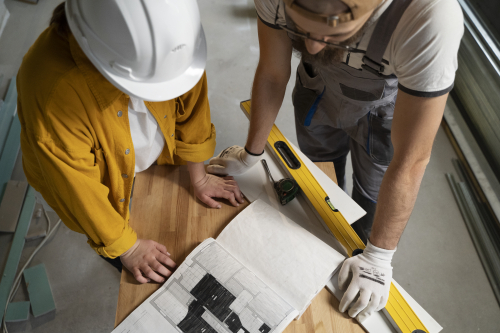Digital Product Development for Construction: 5 Breakthroughs to Watch


Imagine a future where buildings are designed and constructed with unprecedented precision, sustainability, and efficiency. This vision is now becoming a reality through innovative technologies and methodologies. Digital twins, for instance, are revolutionizing the way structures are designed and tested, allowing architects and engineers to simulate every aspect of a building’s performance before it’s even built. AI-driven development is optimizing the entire process, from concept to completion, by automating tedious tasks and providing predictive insights that minimize errors and enhance quality. These breakthroughs are not just improving productivity and reducing costs; they are also opening up new avenues for innovation and collaboration, as teams can now work more seamlessly across disciplines and geographies. As the construction industry continues to evolve at a rapid pace, the focus is shifting from traditional methods to digital-first solutions that put the user at the center of the design process. Stay tuned for the top 5 breakthroughs in digital product development for construction that are set to reshape the industry and redefine what it means to build something from the ground up.
5 Digital Technologies to Watch In Construction
The construction industry, long characterized by manual labor and traditional methods, is undergoing a profound transformation. Digital technologies are revolutionizing the sector, introducing innovative solutions that enhance efficiency, reduce costs, and improve safety. As the industry embraces these advancements, five breakthroughs in digital product development stand out for their potential to reshape the future of construction.
1. Building Information Modeling (BIM)
Building Information Modeling (BIM) is a digital representation of a building’s physical and functional characteristics. It allows architects, engineers, and builders to create detailed, interactive models that facilitate collaboration and streamline the design and construction process. By integrating BIM into their workflows, construction companies can reduce errors, optimize materials usage, and enhance overall project quality.
2. Virtual Reality (VR) and Augmented Reality (AR)
Virtual Reality (VR) and Augmented Reality (AR) are transforming the way buildings are designed and constructed. VR enables immersive, interactive simulations of construction sites, allowing for virtual walkthroughs and detailed inspections. AR overlays digital information onto the real environment, providing real-time updates and visual guidance for construction workers. These technologies improve site safety, reduce errors, and enhance communication among team members.
3. Predictive Maintenance and IoT
The integration of the Internet of Things (IoT) and predictive maintenance is transforming the way construction equipment is managed. IoT sensors collect data on equipment performance, enabling real-time monitoring and proactive maintenance. Predictive analytics identify potential issues, reducing downtime and extending the lifespan of equipment. This approach not only improves productivity but also reduces the environmental impact of construction by minimizing unnecessary resource consumption.
4. Artificial Intelligence (AI) and Machine Learning (ML)
Artificial Intelligence (AI) and Machine Learning (ML) are being harnessed to optimize construction processes. AI-powered tools analyze project data, identifying patterns and predicting outcomes. ML algorithms enable autonomous decision-making, automating tasks such as scheduling and resource allocation. This automation enhances efficiency, reduces labor costs, and improves the overall quality of construction projects.
5. Cloud-Based Collaboration Platforms
Cloud-based collaboration platforms are revolutionizing the way construction teams work together. These platforms enable seamless communication and data sharing across remote locations, enhancing collaboration and reducing the need for physical meetings. Cloud-based tools also facilitate real-time project tracking, ensuring timely updates and minimizing delays. This digital transformation supports global project management and ensures that stakeholders remain informed throughout the lifecycle of a project.
These five breakthroughs in digital product development are transforming the construction industry. By leveraging the power of BIM, VR/AR, IoT, AI/ML, and cloud-based collaboration, construction companies can improve project outcomes, reduce costs, and enhance safety. As the industry continues to adopt these innovations, the future of construction will be marked by increased efficiency, improved quality, and enhanced sustainability.
Imagine a world where buildings can adjust to changing weather patterns, where materials are sourced with a lower environmental impact, and where construction sites are safer and more efficient. Digital product development is making these visions a reality. As technology advances, the role of the construction worker will shift from mere builders to innovators and problem-solvers. The future of construction is not just about bricks and mortar, but about creating a better world for generations to come.
You may also be interested in: Top 5 Disruptive Tech Trends Transforming 2024 – StudioLabs
Ready to elevate your brand and transform your vision to digital solutions? Since 2003, StudioLabs has been trusted to help conceive, create, and produce digital products for the world’s most well-known brands to cutting-edge startups. Partner with StudioLabs and create something phenomenal. Let’s chat and experience StudioLabs in action with a complimentary session tailored to your business needs!